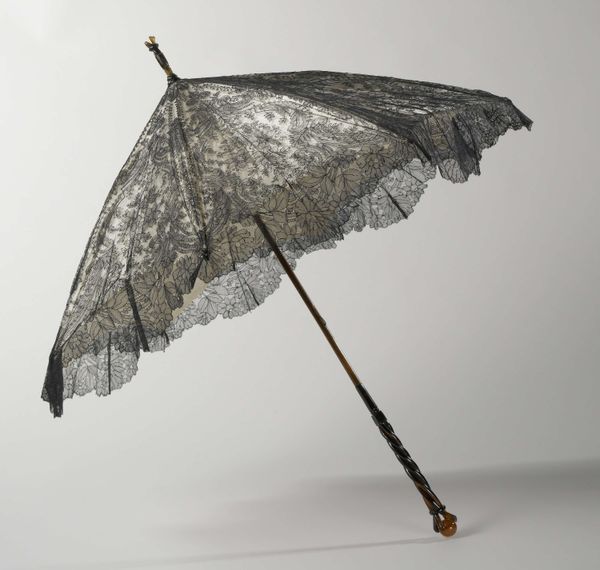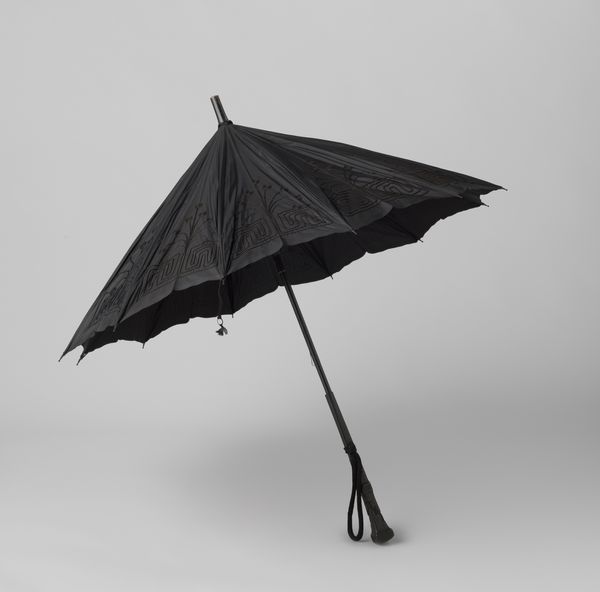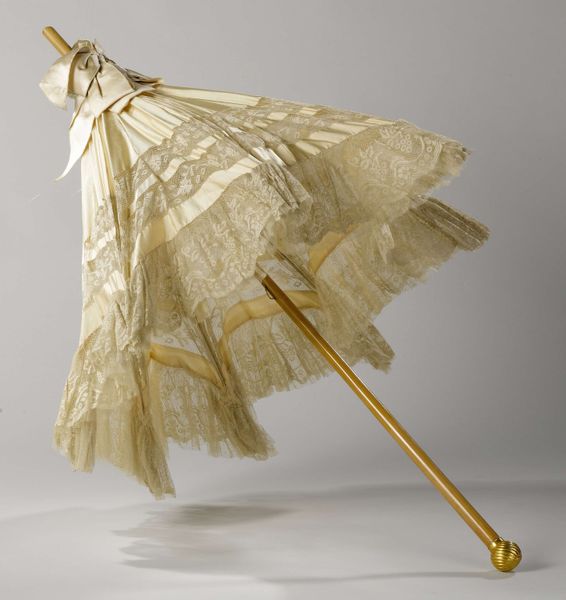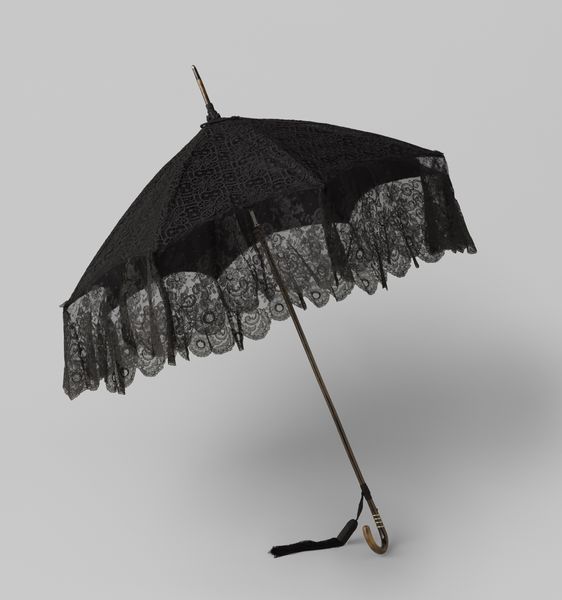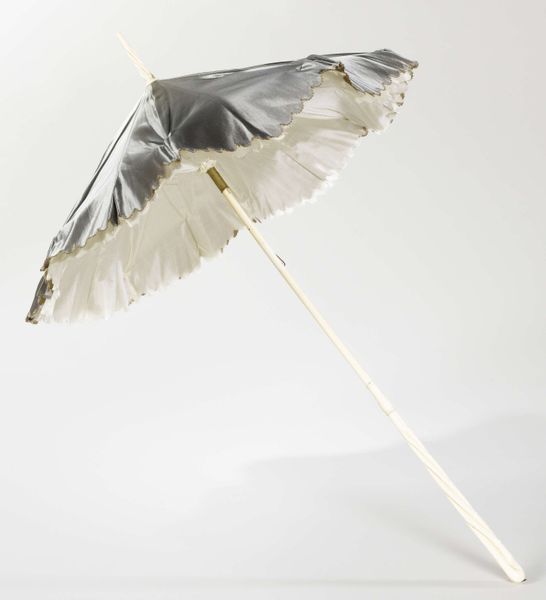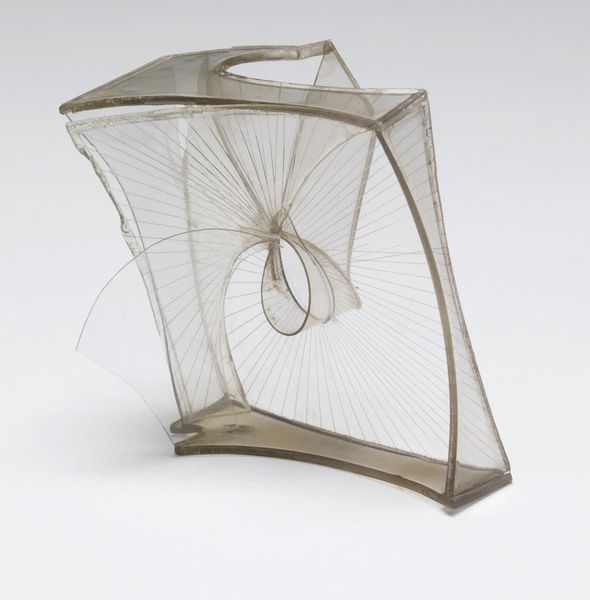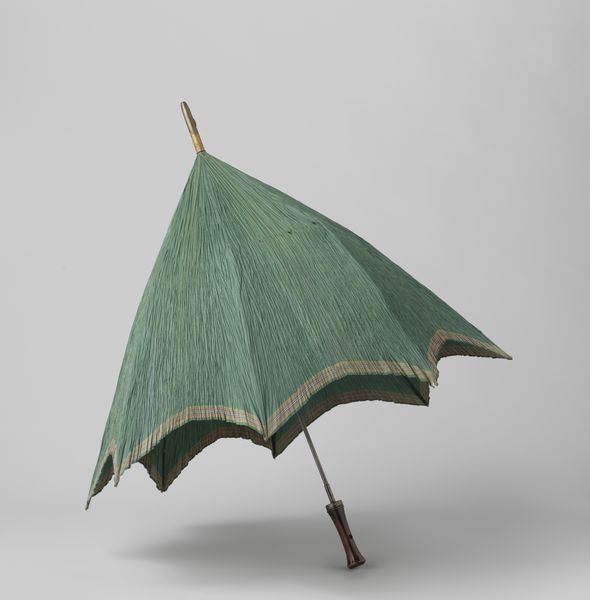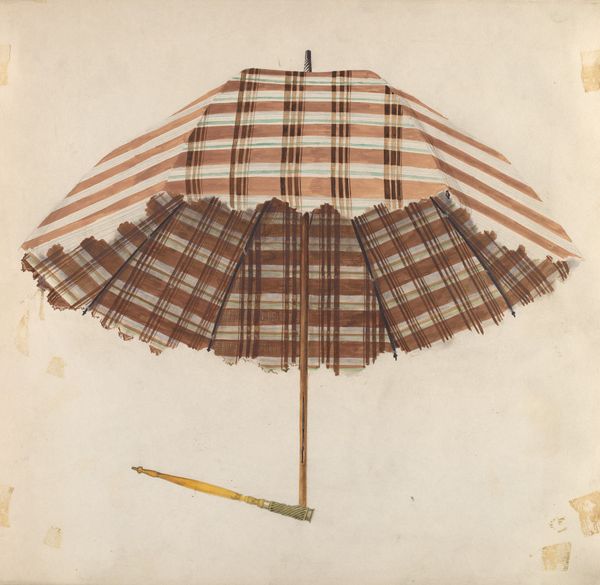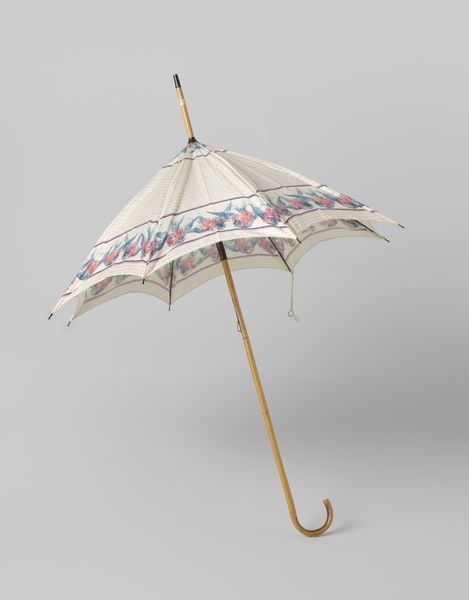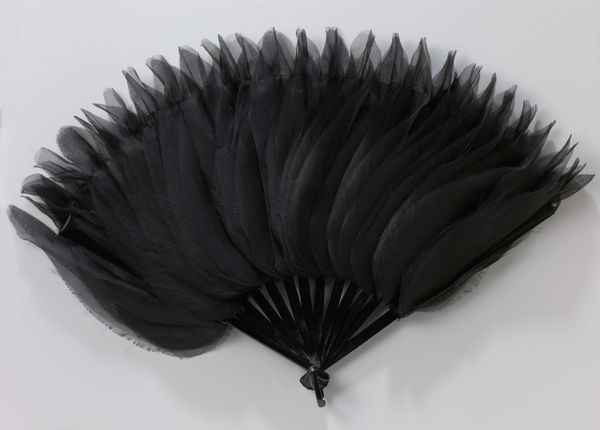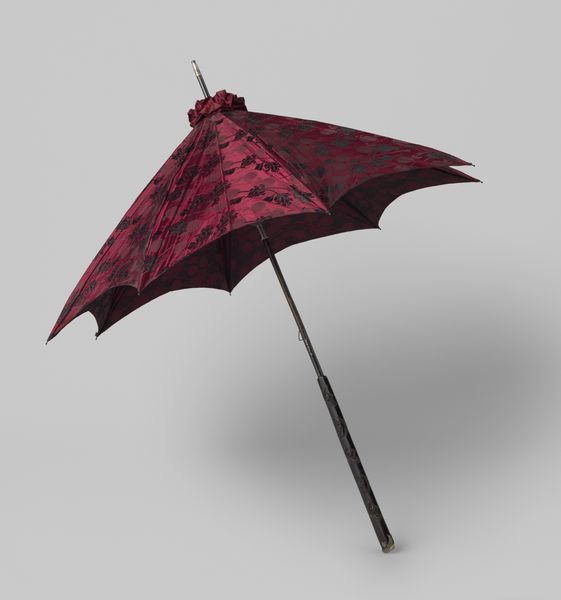
Copyright: Public Domain
This parasol was made by Stern Brothers, sometime between 1867 and 2001, and showcases the fashion of its time. Its dark fabrics, lace, and trimmings speak to the Victorian era's aesthetic, which valued elaborate ornamentation. These fabrics, machine-woven, and assembled with considerable handwork, indicate the evolving modes of production at the time. The lace, for instance, might be machine-made but carefully applied by hand, and the handle likely shaped through a combination of mechanized and manual processes. The layers of material add volume, and the interplay between opaque and transparent creates a visually appealing texture. The parasol’s material richness indicates the owner’s status, reflecting a society deeply stratified by class. This piece speaks to the complex relationship between industrialization and skilled handcraft, as well as the dynamics of labor, consumption, and social identity of the time. Appreciating its materiality and making can help us understand the object’s cultural and social significance.
Comments
No comments
Be the first to comment and join the conversation on the ultimate creative platform.
